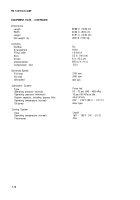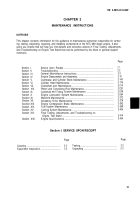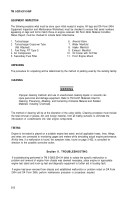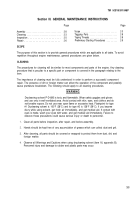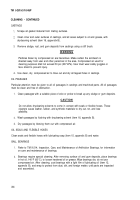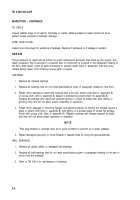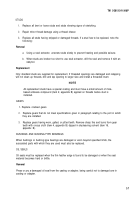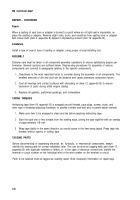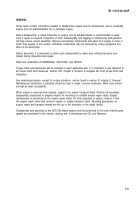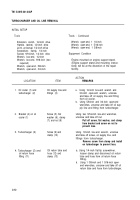TM-5-2815-241-34-P - Page 31 of 738
TM 5-2815-241-34&P
PRELIMINARY STARTING PROCEDURES
WARNING
EXHAUST GAS CAN KILL YOU
Exhaust gas is without color or smell, but can kill you. Breathing exhaust gas produces
symptoms of headache, dizziness, loss of muscular control, a sleepy feeling, and
coma. Brain damage or death can result from heavy exposure to exhaust fumes of fuel-
burning internal combustion engines. Exhaust gases can become dangerously
concentrated under conditions of no air movement. Precautions must be followed to
ensure crew safety when the engine of any vehicle is operated for any purpose.
1.
DO NOT operate vehicle engine inside building unless ample ventilation is available.
2.
DO NOT idle engine for long periods without ventilator blower operating.
3.
DO NOT drive any vehicle with inspection plates, cover plates, or engine com-
partment doors removed unless necessary for maintenance purposes.
4.
BE ALERT at all times during vehicle operation for exhaust odors and exposure
symptoms. If either is present, IMMEDIATELY VENTILATE personnel compart-
ments. If symptoms persist, remove affected crew to fresh air; keep warm; DO
NOT PERMIT PHYSICAL EXERCISE; if necessary, give artificial respiration.
5.
FOR ARTIFICIAL RESPIRATION, REFER TO FM21-11.
6.
BE AWARE; the field protective mask for chemical-biological-radiological (CBR)
protection will not protect you from carbon monoxide poisoning.
THE BEST DEFENSE AGAINST CARBON MONOXIDE POISONING IS GOOD VENTILATION.
NOTE
Perform the following steps as they are applicable before starting engine in the engine
test stand.
1.
Make sure engine exhaust outlet is connected to a suitable shop exhaust system to evacuate
the engine exhaust gases safely from the testing area.
2.
Check air inlet piping to ensure it is attached correctly and tight.
3.
Make sure all cooling system water hoses and clamps are attached correctly and are tight
with no leaks.
4.
Check all fuel lines and fittings to make sure they are attached correctly and are tight with
no leaks.
5.
Make sure all engine test stand gauges and controls are attached to engine properly and
are tight.
6.
Check engine oil level with oil level dipstick to make sure crankcase is full. Oil level should
be between the H (high) and L (low) marks on dipstick.
2-9
Back to Top


